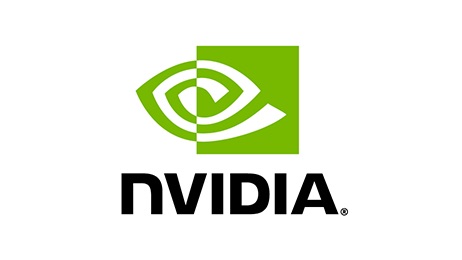Nvidia is collaborating with the US government to ensure compliance with export curbs for new chips intended for the Chinese market. Nvidia is expected to face challenges with the new US restrictions on chip exports.
Nvidia had informed its customers in China about a delay in launching a new AI chip designed explicitly for the Chinese market. The launch initially planned for the next quarter, will take place in the first quarter of the following year.
Nvidia's Commitment to Regulatory Compliance
CEO Jensen Huang emphasized Nvidia's collaboration with the US government during a news conference in Singapore. He stated that Nvidia, which contains over 90% of the market share in China's $7 billion AI chip market, has been working diligently to create products that align with regulatory requirements, as per CNN. The company plans to develop a new set of products adhering to the further limitations imposed by regulations.
Huang highlighted the importance of seeking market advice while the company collaborates with the US government. He acknowledged that Huawei, a significant competitor, poses a formidable challenge in the industry. Nvidia's November earnings report revealed an expected decline in fourth-quarter sales in China following the implementation of the new US rules.
Huang noted that historically, China has contributed around 20% to Nvidia's revenue. However, it remains uncertain how much this percentage will be affected due to the new export restrictions imposed by the United States. According to Yahoo, the situation is under close observation, and Nvidia aims to adapt its strategies accordingly.
Prospective Investments in Singapore
In parallel, Nvidia is discussing potential significant investments with Singapore. Furthermore, the company is collaborating with the city-state to support the development of its large language model, Sealion.
This partnership aligns with Singapore's Infocomm Media Development Authority's recently announced initiative to foster the creation of Southeast Asia's first large language model, backed by a $52 million investment.
Photo: Nvidia Website



 Starlink Plans Satellite Orbit Reconfiguration in 2026 to Boost Space Safety
Starlink Plans Satellite Orbit Reconfiguration in 2026 to Boost Space Safety  Novo Nordisk and Eli Lilly Cut Obesity Drug Prices in China, Boosting Access to Wegovy and Mounjaro
Novo Nordisk and Eli Lilly Cut Obesity Drug Prices in China, Boosting Access to Wegovy and Mounjaro  Nvidia and Groq Strike Strategic AI Inference Licensing Deal
Nvidia and Groq Strike Strategic AI Inference Licensing Deal  Elon Musk’s xAI Expands Supercomputer Infrastructure With Third Data Center to Boost AI Training Power
Elon Musk’s xAI Expands Supercomputer Infrastructure With Third Data Center to Boost AI Training Power  Moore Threads Unveils New GPUs, Fuels Optimism Around China’s AI Chip Ambitions
Moore Threads Unveils New GPUs, Fuels Optimism Around China’s AI Chip Ambitions  Applied Digital Stock Rises on AI Cloud Spinoff Plan and ChronoScale Launch
Applied Digital Stock Rises on AI Cloud Spinoff Plan and ChronoScale Launch  Nvidia to Acquire Groq in $20 Billion Deal to Boost AI Chip Dominance
Nvidia to Acquire Groq in $20 Billion Deal to Boost AI Chip Dominance  Google Accelerates AI Infrastructure With Ironwood TPU Expansion in 2026
Google Accelerates AI Infrastructure With Ironwood TPU Expansion in 2026  Vanda Pharmaceuticals Wins FDA Approval for New Motion Sickness Drug After Four Decades
Vanda Pharmaceuticals Wins FDA Approval for New Motion Sickness Drug After Four Decades  U.S. Lawmakers Urge Pentagon to Blacklist More Chinese Tech Firms Over Military Ties
U.S. Lawmakers Urge Pentagon to Blacklist More Chinese Tech Firms Over Military Ties  Lockheed Martin Secures Nearly $500 Million in U.S. and Allied Defense Contracts
Lockheed Martin Secures Nearly $500 Million in U.S. and Allied Defense Contracts  Samsung Signals Comeback With HBM4 Chips as AI Market Heats Up
Samsung Signals Comeback With HBM4 Chips as AI Market Heats Up  Lockheed Martin Secures $328.5 Million U.S. Defense Contract for Advanced Systems Supporting Taiwan Air Force
Lockheed Martin Secures $328.5 Million U.S. Defense Contract for Advanced Systems Supporting Taiwan Air Force  Lloyds Banking Group to Close Invoice Factoring Business by End of 2025
Lloyds Banking Group to Close Invoice Factoring Business by End of 2025  Boeing Secures Major $2.7 Billion U.S. Military Contract for Apache Helicopter Support
Boeing Secures Major $2.7 Billion U.S. Military Contract for Apache Helicopter Support  Air China Orders 60 Airbus A320neo Jets in $9.5 Billion Deal as Airbus Strengthens Grip on China Market
Air China Orders 60 Airbus A320neo Jets in $9.5 Billion Deal as Airbus Strengthens Grip on China Market  SoftBank Completes $41 Billion OpenAI Investment in Historic AI Funding Round
SoftBank Completes $41 Billion OpenAI Investment in Historic AI Funding Round 































